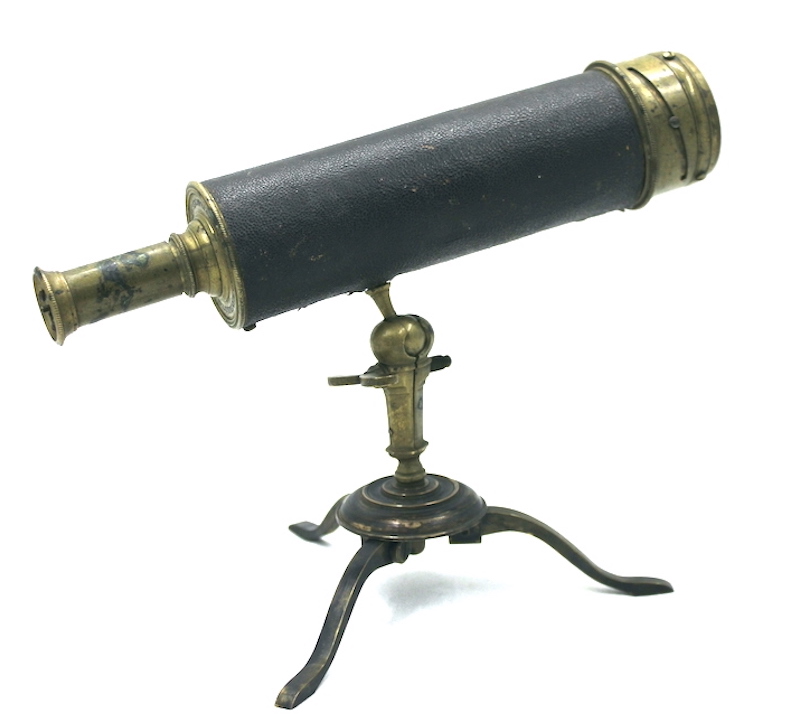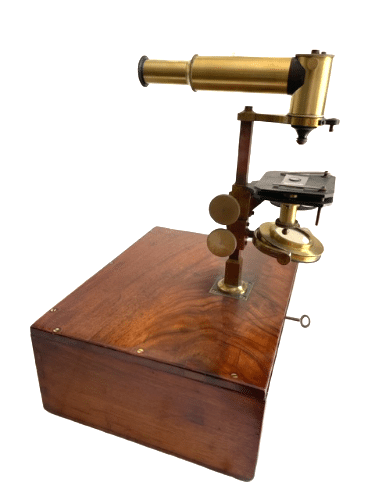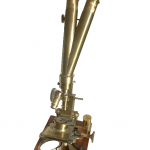Description
Rare travel reflecting telescope signed Passemant au Louvre à Paris.
Same model that Louvre Museum and Whipple Museum.
Brass , black leather covered body.
Focus by milled ring on barrel moving .
the rare travel reflecting telescope, carried on a turned foot, is mounted on a knee to which it is connected by a plate screwed to its belly.
The optical device consists of a large circular mirror on the eyepiece side with an opening in its center ;
it collects the light and reflects it on a small mirror on the opposite which directs the rays again towards the lenses of the eyepiece.
Focusing is done by rotating the end of the main tube; spiral rails make slide a small part connected to the small mirror to move it
forward or backward. This end is also protected by a cover, while the eyepiece has a bolt. In 1668, Isaac Newton created the first functioning reflecting telescope. This type of telescope had the advantage of giving,
with a small size, a magnification identical to the immense glasses of the time;
it also made it possible to avoid the problem of chromatic aberration
(the rays of different colors making up white light do not all focus at the same point when they pass through a glass lens).
The difficulty of manufacturing these instruments, however, delayed their production until the 1720s.
In France, Claude-Siméon Passemant was the first to market them and, in 1738, he contributed to their dissemination by publishing
a treatise on the subject.
The instruments of Claude Simeon Passemant are very difficult to find.
This small travel model is very rare.





